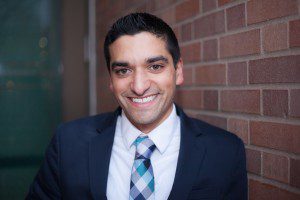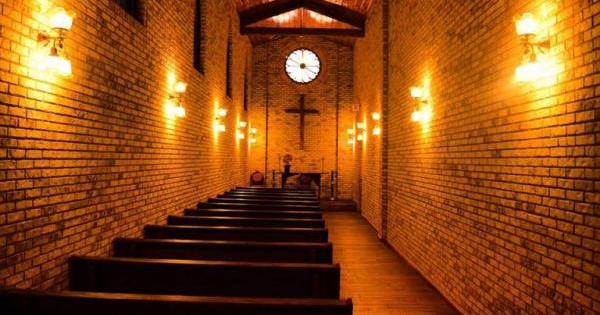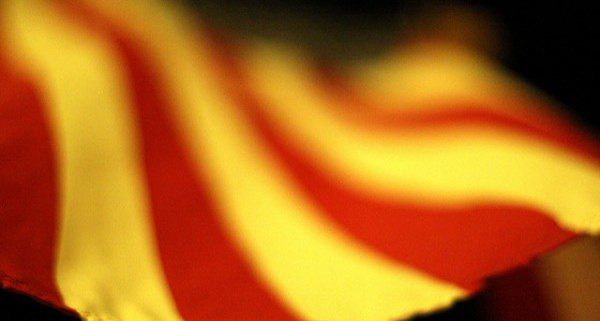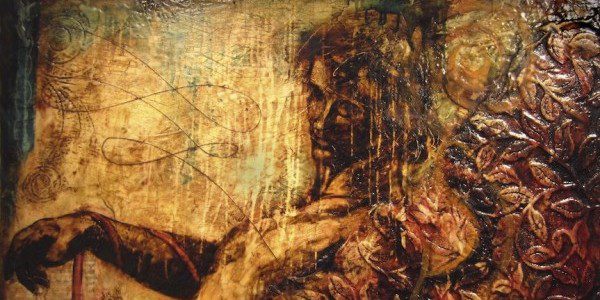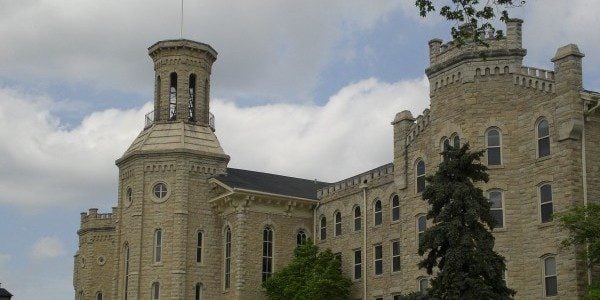The following is a guest post by Adam Rao. See his bio below.
Later this week, around the dinner table, my Christian family members and I will celebrate the birth of Jesus: the result of Joseph, a first-century Middle-Eastern man, following the guidance he received in dreams.
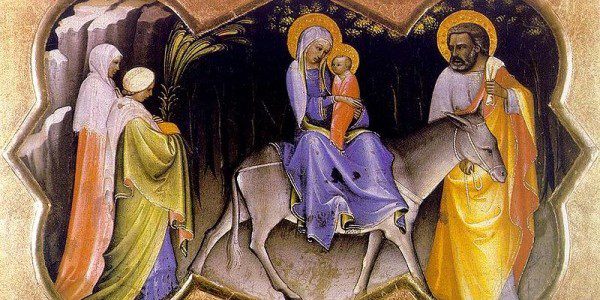
After all, Joseph only avoids certain death for both himself and his family because he was “warned in a dream” to hide in Egypt (Matthew 2:12-13) and, “having been warned in a dream,” to settle his family in Nazareth instead of the more dangerous region of Judea (Matthew 2:22).
At that same dinner table, it is also likely that some of my Christian family members will claim that Islam is an inherently violent religion, and that Muslim refugees–or, in more Donald Trump-like fashion, all Muslims–should be barred from entering the United States in order to maintain our safety and way of life.
Yet, receiving and acting upon guidance from dreams is not only at the center of the Christmas story; as Thomas Hegghammer recently pointed out, it is also at the heart of the militant jihadism many American Christians use to justify their broader fear of Islamic faith. According to Hegghammer, both jihadi “leaders and foot soldiers say they sometimes rely on nighttime visions for decision making”[1]. Likewise, Muhammad Omar, the late supreme commander and spiritual leader of the Taliban, often “relied on his dreams to make important decisions”[2].
In his piece, Hegghammer points out that “the world of radical Islam is not just death and destruction,” as is often assumed. “It also encompasses fashion, music, poetry, dream interpretation. In short, jihadism offers its adherents a rich cultural universe in which they can immerse themselves”[3]. Radical Islam is rooted in the frustration of attempting to live out ancient mores and ancient texts in an increasingly-progressive world. It is fundamentalism, a narrowly literal reading and interpretation of a broader faith, coupled with violence that lies at the center of groups like Islamic State (ISIS) and others who threaten and terrorize the modern world.
However, religious fundamentalism is not unique to Islam: America is, after all, the home of Christian fundamentalism, whose texts likewise encompass fashion, music, poetry, and dream interpretation. And, Christian fundamentalism, too, also finds itself frustrated by modern progressivism in the face of its similarly ancient mores and texts, which its adherents also claim to treat literally. Yet, as Christian fundamentalist leaders–and my own family members–often suggest, Christianity does not have a violent radical wing; rather, violent religious extremism seems to be limited to Islam. In their minds, Islam, unlike any other religion, should be viewed as inherently violent, and its adherents, even those who claim Islam as a religion of peace, seen as a threat.
Now, obviously, these claims are not entirely true. As others have pointed out, terrorist attacks have been committed by non-Muslim religious extremists as well. Timothy McVeigh, raised Catholic, committed one of the most devastating acts of domestic terrorism in American history, detonating a truck bomb outside the Alfred P. Murrah Federal Building in Oklahoma City in 1995; Anders Behring Breivik violently sought to maintain “a Christian Europe,” killing 77 people in Norway in 2011; and, most recently, Dylan Roof, a Lutheran (and white supremacist), murdered nine people at the Emanuel African Methodist Episcopal Church in Charleston, South Carolina in June earlier this year. Yet, even with these examples in mind, I, too, am willing to acknowledge the claim that most religious violence today appears to be perpetrated by radical adherents of Islam.
But this has not always been the case: Christian crusaders murdered thousands in the Middle Ages in the name of God and on the basis of sacred Christian texts. Catholic popes even went as far as to call the Muslims they sought to depose “Amalekites,” directly referring to the book of 1 Samuel as justification for their actions. And, lest we forget, as part of our own American history, when confronting Native Americans, the “sin” of King Saul’s failure to complete genocide in that same biblical book was used not only as justification for the murder of Indians; it was claimed that failing to participate in their deaths would be a violation of God’s law [4].
Both the Bible and the Quran contain violent texts. Both Islam and Christianity include fundamentalist adherents who claim to read those texts literally and apply them as such in the modern world. Christianity has a history of violence funded in part by biblical interpretation, including the Crusades and the genocide of Native Americans.
So, back to the question at hand: Why don’t we see more Christian violence today? Why is it that, today, some Islamic fundamentalists act out violently whereas Christian fundamentalists, for the most part, do not? In theological terms, why do we not see modern-day herem [5] alongside modern-day jihad?
Philip Jenkins, a professor of religious history, argues that, unlike their Judeo-Christian counterparts, fundamentalist adherents of Islam have not yet fully undergone a “holy amnesia”: a maturing and expansion process in which violent texts are slowly, over time, reinterpreted as being symbolic [6].
However, I believe there is more to the story.
Research on religious extremism has notably suggested that there is no identifiable pattern to the radicalization of violent fundamentalists. Yet, researchers do not shy away from noting “key vulnerabilities” that make some receptive to extremist ideology–for example: marginalization, racism, and economic hardship–and note that “catalytic events” such as the loss of a loved one can accelerate the process [7].
In the Christmas story, Joseph lived in Palestine, a region occupied by Rome. Threatened with death by Herod and guided by a dream, he flees during the night to hide. In response, Herod “sent soldiers to kill all the male children in Bethlehem and in all the surrounding territory who were two years old and younger” (Matthew 2:16). That night, “A voice was heard in Ramah, weeping and much grieving. Rachel weeping for her children, and she did not want to be comforted, because they were no more” (Matthew 2:18).
Muhammad Omar grew up in Soviet-occupied Afghanistan where he and his Mujahedeen freedom fighters received American military support in the form of weapons and training in their fight against the Soviet Union. Eventually, he became leader of the fundamentalist Afghan Taliban movement, which harbored Osama bin Laden and others involved in the September 11 terrorist attacks. After September 11, Omar became an enemy of the United States. With his life threatened, he fled into hiding in October 2001. Later that month, in search of Omar, the US-led coalition launched a raid on his home that, reportedly, resulted in the killing of his 10-year-old son. Omar then led the Taliban insurgency against US troops in Afghanistan for the next decade.
Is it inconceivable that, had Herod killed the son Joseph chose to identify as his own, he might have joined the first-century violent Jewish extremists known as the Zealots who committed acts of terrorism against Rome? Is it beyond the realm of possibility that, were circumstances different for us today, we might see Christian violent extremism on the level of Islamic State?
Please do not misunderstand: Muhammad Omar’s violent actions cannot be explained away by tragedy or economic hardship or even American occupation of foreign lands. There can be no justification for the killing of innocent lives. Yet, the parallels between the two stories–and the circumstances surrounding the fundamentalist adherents of these two faiths–should not be overlooked, either.
While militant Islam is a formidable threat and its actions are undeniably evil, ignoring the economic and other beneficial circumstances the West currently enjoys and how they contribute to why violent Christianity has not emerged with similar intensity would be a mistake. Violent Christian extremism is part of our Christian past, and it is not beyond the realm of possibility to imagine that the same elements that have contributed to the rise of radical Islam today, applied to adherents of a different faith, could not produce similar results.
This Christmas, instead of falling into the fear and xenophobia that defines so much of our current national conversation, what if we chose to embody the best of Christian faith and American values instead? While the alignment between Christianity and American values is often, and easily, overstated, connections do exist. Both are guided by dreams.
Christianity is guided by the dream of a world where the child “born to us,” the one known as “Wonderful Counselor, Mighty God, Eternal Father, Prince of Peace,” (Isaiah 9:6) leads all of humanity to a future where the “wolf and lamb will graze together, and the lion will eat straw like an ox” (Isaiah 65:25). America is guided by the dream of “peace, commerce, and honest friendship with all nations” (Thomas Jefferson, First Inaugural Address, 1801) and life that is “better and richer and fuller for everyone” (James Truslow Adams, 1931).
When circumstances are unjust, terrorism can, and often does, flourish. Yet, the Christ-child came to bring hope and justice to all people.
In the spirit of this season, I am recommitting myself to action instead of fear; to creating a more just and verdant world for all; to understanding, acknowledging my part in, and working to repair the conditions that all too often lead fundamentalist believers down paths of violence; and expressing gratitude for the benefits I enjoy that temper, if not eliminate, potential extremism in my own faith, culture, and land. In the words of Luke, the gospel-writer: “Don’t be afraid! Look! I bring good news to you – wonderful, joyous news for all people” (Luke 2:10).
Adam Rao is a social innovator and entrepreneur currently pursuing his MBA at the Carlson School of Management, University of Minnesota. Prior to his time at Carlson, he served as the Founding Executive Director of Exodus Lending, a first-of-its-kind charitable payday loan refinancing program, and as the Lead Pastor at Lakeside Church in Minneapolis.
[1] Thomas Hegghammer, “The Soft Power of Militant Jihad,” The New York Times, December 18, 2015, http://www.nytimes.com/2015/12/20/opinion/sunday/militant-jihads-softer-side.html.
[2] Brian R. Farmer, Understanding Radical Islam: Medieval Ideology in the Twenty-First Century (New York, NY: Peter Lang Publishing, 2008), 115.
[3] Hegghammer.
[4] See Philip Jenkins, Laying Down the Sword: Why We Can’t Ignore the Bible’s Violent Verses (New York, NY: HarperCollins Publishers, 2011).
[5] The Hebrew word hΩeärem, “ban,” is perhaps most famously used in the book of Joshua: “Without mercy, they wiped out everything in the city as something reserved for God – man and woman, young and old, cattle, sheep, and donkeys” (Joshua 6:21).
[6] See Barbara Bradley Hagerty, “Is the Bible More Violent Than the Quran?,” National Public Radio, March 18, 2010, http://www.npr.org/templates/story/story.php?storyId=124494788.
[7] See, for example, Kris Christmann, “Preventing Religious Radicalism and Violent Extremism: A Systematic Review of the Research Evidence,” Research Report, Youth Justice Board for England and Wales, 2012.

